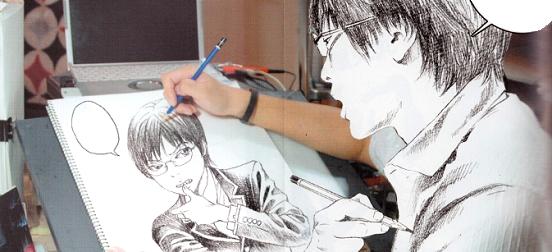
Sunday at Toronto Comics Art Fest had a spotlight panel for special guest and manga artist, Usamaru Furuya. I was present for the interview which was conducted by TCAF’s director, Christopher Butcher. Like my Natsume Ono post, I wasn’t able to record the interview (though in this instance it was lack of means instead of lack of permission) so the write-up below is done in paragraph format with just a few direct quotes. I hope it still proves even half as interesting to readers here as it was for those of us there!
Warning: Some images in article are intended for older audiences only.
“After graduating from Tama University of the Arts, Tokyo native Usamaru Furuya turned his attention to the world of comics. Since his debut in 1994, he has gone on to draw sixteen titles. First translated into English in the nineties before the onset of the manga boom, he won an expectant cult following in the United States that is being rewarded only today with a new spate of localizations.” (Creator bio from Vertical Inc.)
Chris was a fantastic host who had a lot of knowledge and enthusiasm for Usamaru Furuya’s work. He started the spotlight with a short history of Furyra’s earlier works, notably the now out of print in English Short Cuts. He then opened the floor to Furuya speaking about his works.
Usamaru Furuya wrote the shorts published in the Secret Comics Japan anthology (now out of print in English) when he was twenty-four years old. He drew manga when he was a kid but stopped as he grew older. Because of this he found suddenly going back to trying comics was difficult so he started with 4-koma style works becase of the simplicity of the four boxes. He didn’t really set out to make 4-koma comics, it was just easiest. The style of it was so simple however that he liked he got away with calling his artwork ‘minimalistic’.
Usamaru Furuya went to art university for theatre panel studies. Around this time he was asked by his editor to create Short Cuts which is the work that forced him to learn how to leave the 4-koma style. He was still stuck in tight panels though.
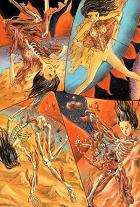 In his work, Garden, there’s a few pages that are sealed shut. A reader needs to cut them apart in order to read them. The content inside was so violent that they wanted to give readers the option to read them. As Usamaru Furuya said “if you get nauseous, you could stop.”. Usamaru Furuya says he doesn’t really think about his works in advance and “lets instinct write it”. He admits he felt very stressed about himself personally when writing Garden and was still scared of panelling. He did feel much better about leaving the 4-koma style behind him once Garden was finished however. He’s very thankful to his editors at the time for helping him reach that point.
In his work, Garden, there’s a few pages that are sealed shut. A reader needs to cut them apart in order to read them. The content inside was so violent that they wanted to give readers the option to read them. As Usamaru Furuya said “if you get nauseous, you could stop.”. Usamaru Furuya says he doesn’t really think about his works in advance and “lets instinct write it”. He admits he felt very stressed about himself personally when writing Garden and was still scared of panelling. He did feel much better about leaving the 4-koma style behind him once Garden was finished however. He’s very thankful to his editors at the time for helping him reach that point.
Chris then asked Usamaru Furuya about how he draws very pretty people and how works look so different. His work Flowery is drawn in a very painting-like style and notably varies from the sharper look of his other series. What influences these changes in his art? Usamaru Furuya said he wasn’t conscious of the change: “When I think about drawing comics, when the story changes, the art style changes with it.”
Lychee Light Club was inspired a lot by underground theatre and by one of his favourite underground artists at the time (Lissa’s note: I was unsure of the artist’s name so opted to not try and add it here inaccurately). He found he mimicked the artist’s style with Lychee Light Club as a form of respect. Usamaru Furuya believes that his book Flowers is much more representative of his actual personal style.
The work No Longer Human has a different kind of art style as well, according to Christopher Butcher. Usamaru Furuya shared what the book is about including that it’s based on a Japanese novel series. The story takes place in a contemporary world about a young man whose life is spiralling into darkness and depression. Again Usamaru Furuya says he wasn’t conscious of the art style changing but did want his work on the series to reflect the original story’s mood and theme. He wanted it to be more realistic: “… more shadows, more real.”
Usamaru Furuya says that he sees how some manga artists change their art styles with each book while others always stay the same. He refers to himself as “like a chameleon” with it comes to drawing different works.
Chris noted that he’s always felt Usamaru Furuya is, as an artist, never afraid to stop the story and show what’s going on with him as a creator. He uses an example from Short Cuts where the character representing Usamaru Furuya enters the scene to complain about how frustrating creating nine panel pages is. “I want to draw a big picture!” – Short Cuts. Then on the next page there’s a huge detail-heavy, full page spread. Usamaru Furuya admitted he was very tired when he was drawing Short Cuts, especially that particular page. “I was tired of drawing the panels.” He drew himself in the story to relieve the stress. “Thinking back, I was kind of selfish. Selfish, but honest.”
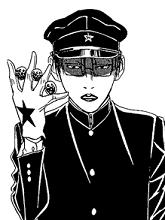
When asked if he wanted readers to really see his process instead of just the actual story (with instances like these), Usamaru Furuya said he never means to show himself in his work, “… it just happens.” It’s something else he admits he’s not really conscious of when it happens but feels he’s a much stronger person now that he can create a work where he doesn’t involve himself.
Usamaru Furuya answered that his favourite work is always the one he’s working on at the time. Currently he’s working on a title for Shonen Jump with a series similar to Genkaku Picasso so that’s his favourite right now. Along with that series, he’s also working simultaneously on a comic for Erotics F. It’s a story taking place in the middle-ages in France where children are battling. It’s aptly called Children’s Crusade. He just recently finished No Longer Human.
In regards to his working enviroment, Usamaru Furuya works with assistants and shared his busy work schedule:
| Monday | Works with 4 assistants (general work) | 10am-10pm |
| Tuesday | Works with 3 assistants (general work) | 10am-10pm |
| Wednesday | Works with 1 assistant (finishing) | 10am-10pm |
| Thursday | Interviews & meetings | Varies |
| Friday | Interviews & meetings | Varies |
| Saturday | Storyboarding | Varies |
| Sunday | Preparing-for-more-work day | Varies |
Usamaru Furuya says he’s done this same work schedule for the past ten years. Prior to that he simply didn’t have any assistants but worked as hard. Chris was sure to thank him for interrupting his busy schedule to attend!
Chris said that Usamaru Furuya’s work 51 Ways To Save Her (which was originally licensed by CMX but fell through when the company shutdown), has grown in popularity after the recent tragedy in Japan. Chris wanted to know if Usamaru Furuya would change anything about the story in light of what happened. 51 Ways To Save Her is about two characters who experience a huge earthquake in Tokyo and must try and make it home. Usamaru Furuya notes there was no tsunami in his story and no nuclear crisis which he believes is one of the hugest impacts of the recent disaster. Specifically he laments the effects it’s having on people across the Pacific. He says he now knows much more about earthquakes, about how when and where the quake hits can have an effect on the results. His descriptions ranged from the creation of tsunamis to the potential smell of rotting corpses caused by any quake that would happen in the summer. He remains very shaken and sad about the natural disaster and says that he may feel comfortable enough to revisit the concept with his new knowledge in about 10 years. Usamaru Furuya says he was able to write 51 Ways To Save Her at the time because Japan was in “a time of peace” so he didn’t feel guilty about it, though that would be very different today.
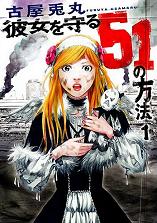 Moving onto more light-hearted territory before opening the floor to attendee questions, Chris asked if Usamaru Furuya speaks to people around the world about his works. Usamaru Furuya responded that “I don’t hear much from foreign countries. I very rarely receive e-mail… When making comics I don’t mean to make it for the world. I make it for one person – I think: is that particular person happy about what I’m writing? Is it funny or interesting? If they think so, the world does to. It’s universal.” He followed up by admitting the person he was referring to was himself in high school.
Moving onto more light-hearted territory before opening the floor to attendee questions, Chris asked if Usamaru Furuya speaks to people around the world about his works. Usamaru Furuya responded that “I don’t hear much from foreign countries. I very rarely receive e-mail… When making comics I don’t mean to make it for the world. I make it for one person – I think: is that particular person happy about what I’m writing? Is it funny or interesting? If they think so, the world does to. It’s universal.” He followed up by admitting the person he was referring to was himself in high school.
An audience member asked Usamaru Furuya about his work Plastic Girl. The book is a story told with a variety of different materials for the artwork. The different mediums included wood, cloth, japanese-style paper, photography, stones, stained glass, holes in walls, melted iron and cardboard boxes, among others. Usamaru Furuya said “I wanted to be free of the paper.” The story itself is about a girl who wanted to be an adult and get away from childhood. There’s an escape theme between the plot and Usamaru Furuya wanting to escape paper. He said Plastic Girl was a lot of fun but he’d never do it again. Plus it was very expensive.
When asked how Usamaru Furuya would describe his character Picasso (from Genkaku Picasso) from the perspective of being a high school art teacher, he responded with what he found about teenagers when he taught art (neat fact!). “Kids don’t normally show their expressions, especially to teachers.” He found it very hard to give advice to students and believes he’d find it the same with Picasso. That said, he believes “…if I can teach how to draw to a serious art student, I think it would reduce one kind of his suffering.”
In follow-up, he was asked how he would interact with Picasso as a friend. Usamaru Furuya admits that Picasso was himself. He said he painted and drew a lot in highschool and didn’t have many friends. “I thought I’d be popular with girls if I could paint well… it never happened.” Eventually he did find friends through his painting. Today he is making comics and travelling the world because of it so he believes Picasso would be very happy with this future.
Because of the heavy horror nature of his stories, someone asked if there are horror stories/movies that inspire him. Usamaru Furuya answered that he used to watch a lot of horror films though doesn’t watch them anymore. He believes as a young adult he was looking for that kind of stimulation but not since he’s grown up. He was also inspired by the works of Kazuo Umezu (Drifting Classrom).
Lastly, Furuya was asked what he thought of the use of the internet for cartooning. In response, Furuya held up a printed screenshot of his webcomic website where he’s posting the prequel to Lychee Light Club. He says the idea of posting his new work online was originally his idea and he approached his editor about it. He enjoys that people can leave comments on the pages. Having been envious of comedians who get an immediate reaction to their craft (ie: laughter), Furuya wanted to experience the same instantaneous response by using the internet. He’s gotten very good responses about his comic and that makes him very happy, plus he believes he’s learning a lot from it. Furuya said he told Natsume Ono she should join him online.
And that was it! Usamaru Furuya was very honest with what he said and the answers he gave to questions. I really enjoyed his panel and hope that he had a good time here in Canada and at TCAF. My thanks to Furuya, his translator and Christopher Butcher for the informative interview.


 Follow
Follow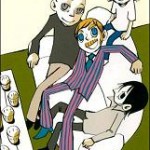







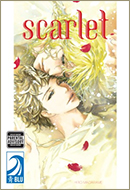








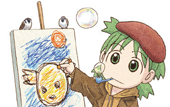









[…] Spotlight on Usamaru Furuya […]
[…] to meet Usamaru Furuya and hear him interviewed at TCAF 2012 was also a big highlight of the year for me. Hopefully in 2012 I’ll be able to […]
[…] Furuya in Toronto! (Same Hat!) A Short Appreciation of Manga-ka Usamaru Furuya (Comics 212) TCAF 2011: Spotlight on Usamaru Furuya (Kuriousity) This Genius’s Horror Edition of MMF: Usamaru Fuyura (Organization Anti-Social […]